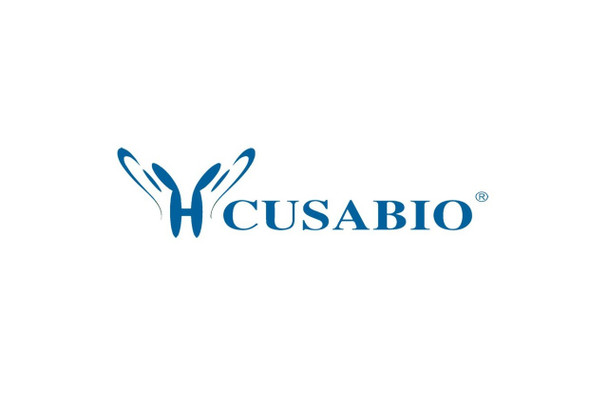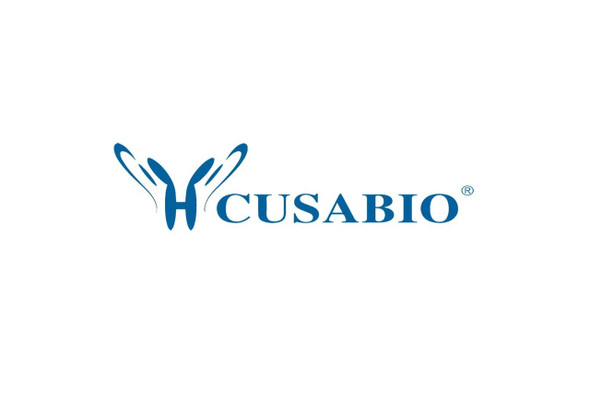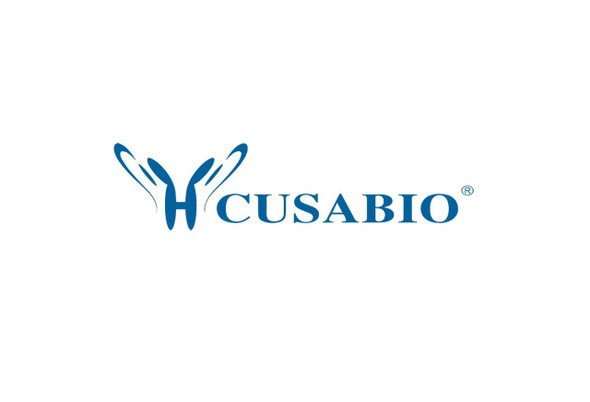Cusabio Human Recombinants
Recombinant Human Lutropin-choriogonadotropic hormone receptor (LHCGR), partial | CSB-EP012911HU
- SKU:
- CSB-EP012911HU
- Availability:
- 3 - 7 Working Days
Description
Recombinant Human Lutropin-choriogonadotropic hormone receptor (LHCGR), partial | CSB-EP012911HU | Cusabio
Alternative Name(s): Luteinizing hormone receptor ;LHR ;LSH-R
Gene Names: LHCGR
Research Areas: Neuroscience
Organism: Homo sapiens (Human)
AA Sequence: EALCPEPCNCVPDGALRCPGPTAGLTRLSLAYLPVKVIPSQAFRGLNEVIKIEISQIDSLERIEANAFDNLLNLSEILIQNTKNLRYIEPGAFINLPRLKYLSICNTGIRKFPDVTKVFSSESNFILEICDNLHITTIPGNAFQGMNNESVTLKLYGNGFEEVQSHAFNGTTLTSLELKENVHLEKMHNGAFRGATGPKTLDISSTKLQALPSYGLESIQRLIATSSYSLKKLPSRETFVNLLEATLTYPSHCCAFRNLPTKEQNFSHSISENFSKQCESTVRKVNNKTLYSSMLAESELSGWDYEYGFCLPKTPRCAPEPDAFNPCEDIMGYDFLR
Source: E.coli
Tag Info: N-terminal 6xHis-tagged
Expression Region: 27-363aa
Sequence Info: Partial
MW: 41.6 kDa
Purity: Greater than 90% as determined by SDS-PAGE.
Relevance: Receptor for lutropin-choriogonadotropic hormone. The activity of this receptor is mediated by G proteins which activate adenylate cyclase.
Reference: Generation and annotation of the DNA sequences of human chromosomes 2 and 4.Hillier L.W., Graves T.A., Fulton R.S., Fulton L.A., Pepin K.H., Minx P., Wagner-McPherson C., Layman D., Wylie K., Sekhon M., Becker M.C., Fewell G.A., Delehaunty K.D., Miner T.L., Nash W.E., Kremitzki C., Oddy L., Du H. , Sun H., Bradshaw-Cordum H., Ali J., Carter J., Cordes M., Harris A., Isak A., van Brunt A., Nguyen C., Du F., Courtney L., Kalicki J., Ozersky P., Abbott S., Armstrong J., Belter E.A., Caruso L., Cedroni M., Cotton M., Davidson T., Desai A., Elliott G., Erb T., Fronick C., Gaige T., Haakenson W., Haglund K., Holmes A., Harkins R., Kim K., Kruchowski S.S., Strong C.M., Grewal N., Goyea E., Hou S., Levy A., Martinka S., Mead K., McLellan M.D., Meyer R., Randall-Maher J., Tomlinson C., Dauphin-Kohlberg S., Kozlowicz-Reilly A., Shah N., Swearengen-Shahid S., Snider J., Strong J.T., Thompson J., Yoakum M., Leonard S., Pearman C., Trani L., Radionenko M., Waligorski J.E., Wang C., Rock S.M., Tin-Wollam A.-M., Maupin R., Latreille P., Wendl M.C., Yang S.-P., Pohl C., Wallis J.W., Spieth J., Bieri T.A., Berkowicz N., Nelson J.O., Osborne J., Ding L., Meyer R., Sabo A., Shotland Y., Sinha P., Wohldmann P.E., Cook L.L., Hickenbotham M.T., Eldred J., Williams D., Jones T.A., She X., Ciccarelli F.D., Izaurralde E., Taylor J., Schmutz J., Myers R.M., Cox D.R., Huang X., McPherson J.D., Mardis E.R., Clifton S.W., Warren W.C., Chinwalla A.T., Eddy S.R., Marra M.A., Ovcharenko I., Furey T.S., Miller W., Eichler E.E., Bork P., Suyama M., Torrents D., Waterston R.H., Wilson R.K.Nature 434:724-731(2005)
Storage: The shelf life is related to many factors, storage state, buffer ingredients, storage temperature and the stability of the protein itself. Generally, the shelf life of liquid form is 6 months at -20?/-80?. The shelf life of lyophilized form is 12 months at -20?/-80?.
Notes: Repeated freezing and thawing is not recommended. Store working aliquots at 4? for up to one week.
Function: Receptor for lutropin-choriogonadotropic hormone
Involvement in disease: Familial male precocious puberty (FMPP); Luteinizing hormone resistance (LHR)
Subcellular Location: Cell membrane, Multi-pass membrane protein
Protein Families: G-protein coupled receptor 1 family, FSH/LSH/TSH subfamily
Tissue Specificity: Gonadal and thyroid cells.
Paythway: Calciumsignalingpathway
Form: Liquid or Lyophilized powder
Buffer: If the delivery form is liquid, the default storage buffer is Tris/PBS-based buffer, 5%-50% glycerol. If the delivery form is lyophilized powder, the buffer before lyophilization is Tris/PBS-based buffer, 6% Trehalose, pH 8.0.
Reconstitution: We recommend that this vial be briefly centrifuged prior to opening to bring the contents to the bottom. Please reconstitute protein in deionized sterile water to a concentration of 0.1-1.0 mg/mL.We recommend to add 5-50% of glycerol (final concentration) and aliquot for long-term storage at -20?/-80?. Our default final concentration of glycerol is 50%. Customers could use it as reference.
Uniprot ID: P22888
HGNC Database Link: HGNC
UniGene Database Link: UniGene
KEGG Database Link: KEGG
STRING Database Link: STRING
OMIM Database Link: OMIM









